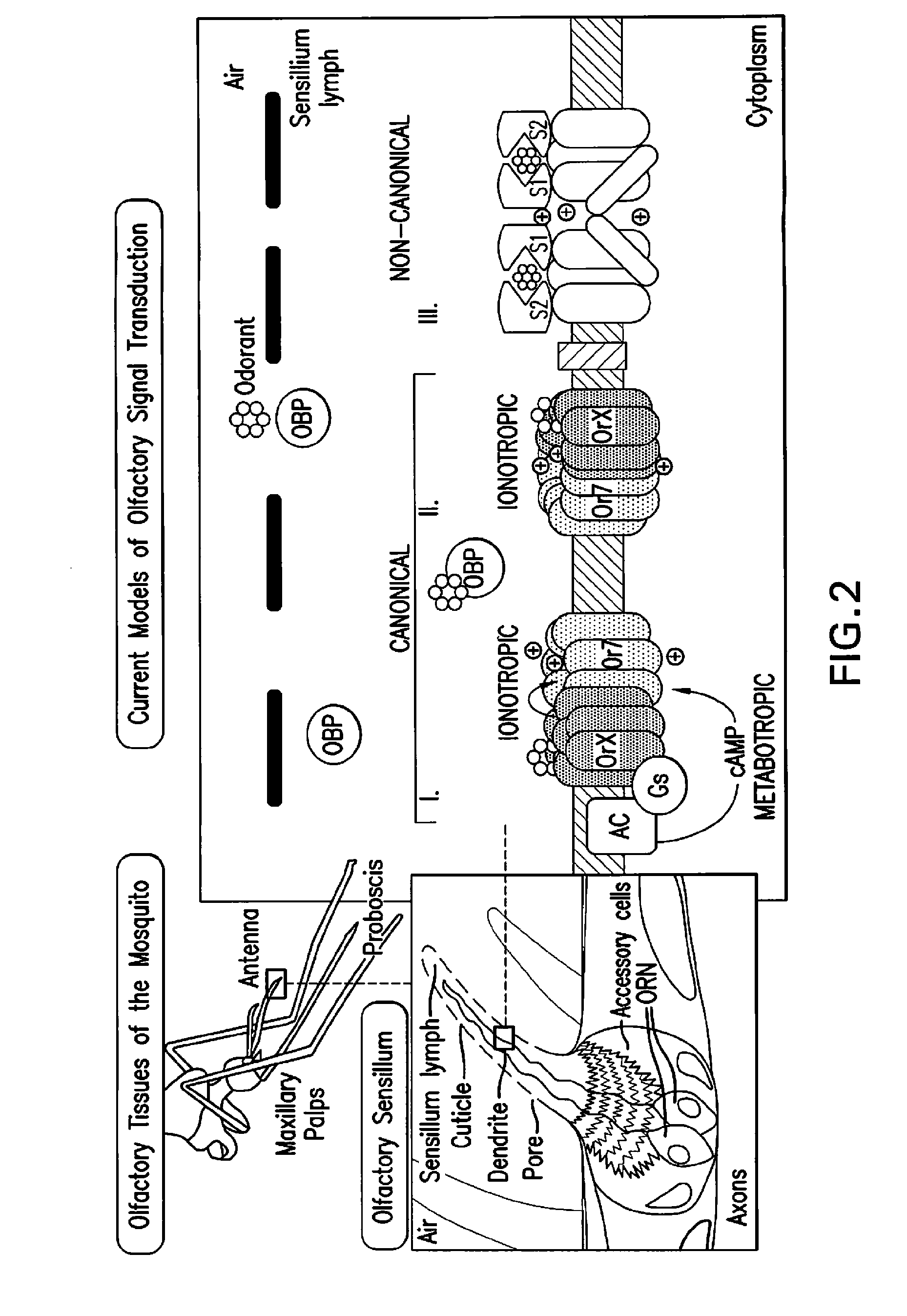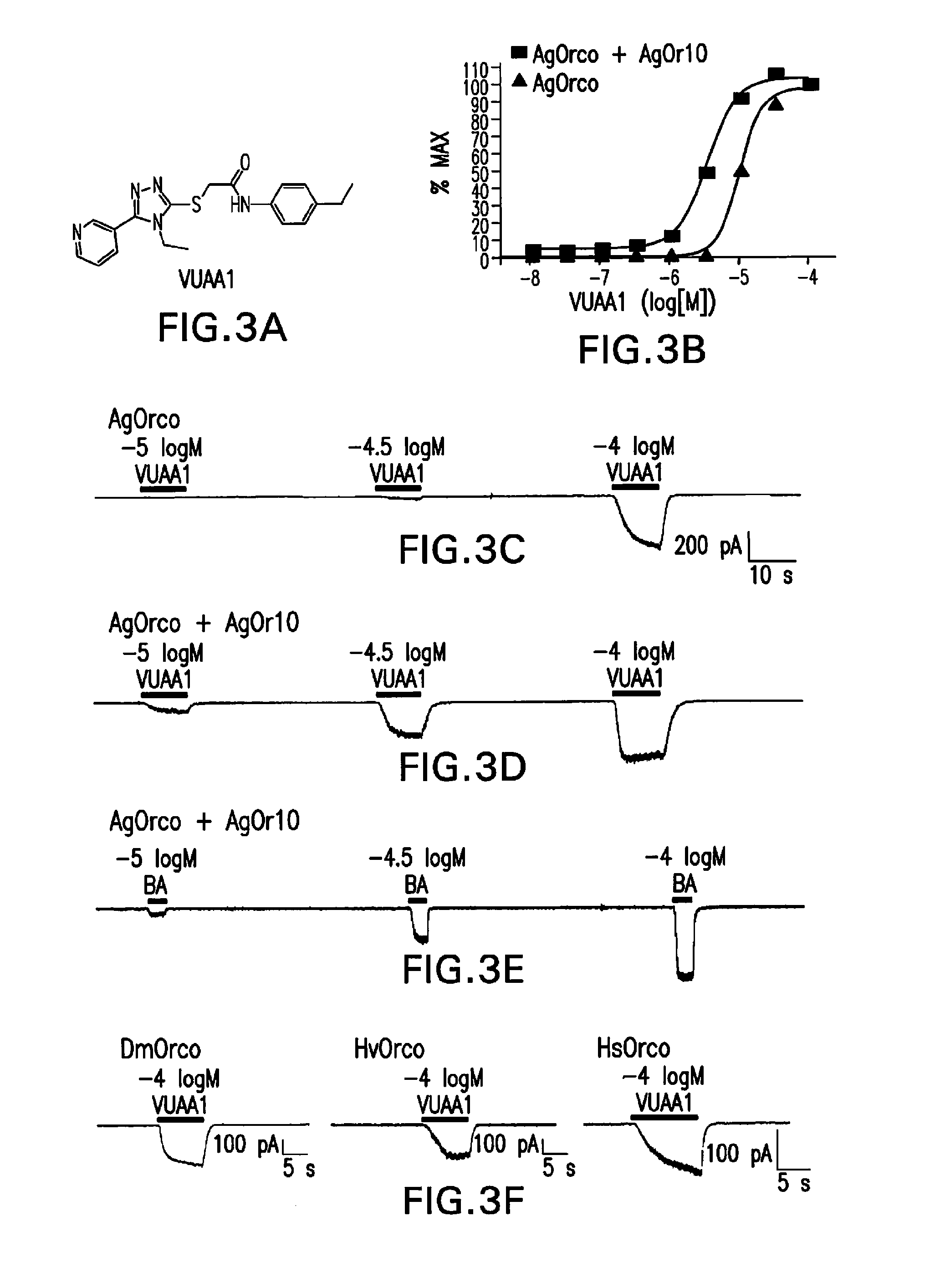Composition for inhibition of insect host sensing
a technology of insect host sensing and composition, applied in the field of entomology and infectious diseases, can solve the problems of limited duration and need for insect contact, environmental and host toxicity, and high cost, and achieve the effect of reducing the infestation of crop-damaging insects
- Summary
- Abstract
- Description
- Claims
- Application Information
AI Technical Summary
Benefits of technology
Problems solved by technology
Method used
Image
Examples
example 1
Materials & Methods
[0120]Cell Culture and Ca2+ Imaging.
[0121]For transient transfections, ORs were cloned into pCI (Promega) and transfected into Flp-In™ T-REx™293 cell lines (Invitrogen) with Fu GENE6 (Roche). For the creation of stable cell lines, a cell culture expression vector capable of expressing AgORco in conjunction with a conventional OR, pcDNA5 / FRT / TO (Invitrogen) was modified to create two individual expression cassettes each under the control of a separate CMV / TetO2 promoter and a BGH poly-adenylation signal. Cells (as above) were transfected with the modified pcDNA5 plasmid along with POG44 (a Flp recombinase expression plasmid) to facilitate site-specific recombination. Stable cell lines were selected using Hygromycin B (Invitrogen). Cells were maintained in DMEM (Invitrogen) supplemented with 10% Tetracycline-free FBS (HyClone) and 15 μg / ml Blasticidin. For fluorometric Ca2+ measurements, stable lines expressing ORs of interest were seeded at 20,000 cells / well in bla...
example 2
Results
[0130]As part of an ongoing, cell based calcium imaging screen for novel small-molecule modulators of AgORs that might disrupt olfactory-driven mosquito behaviors (Rinker et at manuscript in preparation), the inventors identified a number of compounds that activated AgOR10+AgORco-expressing human embryonic kidney (HEK293) cells. One of these compounds (FIG. 3A), denoted here as VUAA1, elicited activity consistent with allosteric agonism and was pursued for its novel properties. The identity of VUAA1 was verified using high-resolution mass spectrometry (HRMS) as well as 1H and 13C NMR. When AgORco+AgOR10 cells were tested in a plate-based calcium imaging system, VUAA1 elicited concentration-dependent responses that were not seen in control cells (FIG. 3B). Upon further investigation, VUAA1 proved capable of activating other AgORco7+AgOR10 cell lines as well (unpublished data). As AgORco was the common element among these functional responses, the inventors postulated that VUAA...
PUM
 Login to View More
Login to View More Abstract
Description
Claims
Application Information
 Login to View More
Login to View More - R&D
- Intellectual Property
- Life Sciences
- Materials
- Tech Scout
- Unparalleled Data Quality
- Higher Quality Content
- 60% Fewer Hallucinations
Browse by: Latest US Patents, China's latest patents, Technical Efficacy Thesaurus, Application Domain, Technology Topic, Popular Technical Reports.
© 2025 PatSnap. All rights reserved.Legal|Privacy policy|Modern Slavery Act Transparency Statement|Sitemap|About US| Contact US: help@patsnap.com



